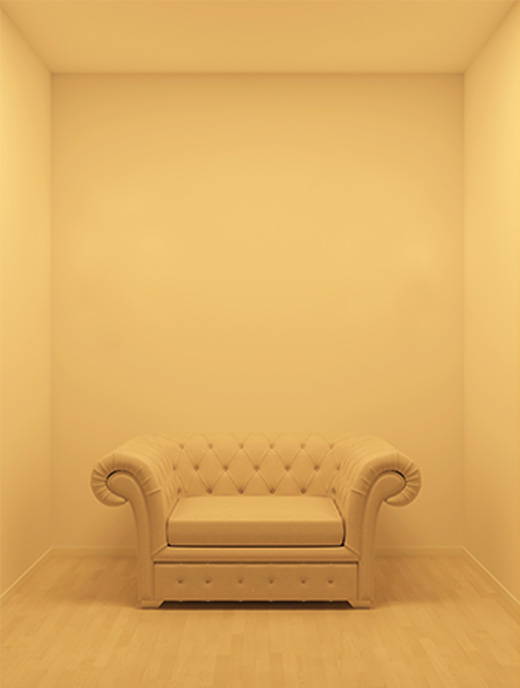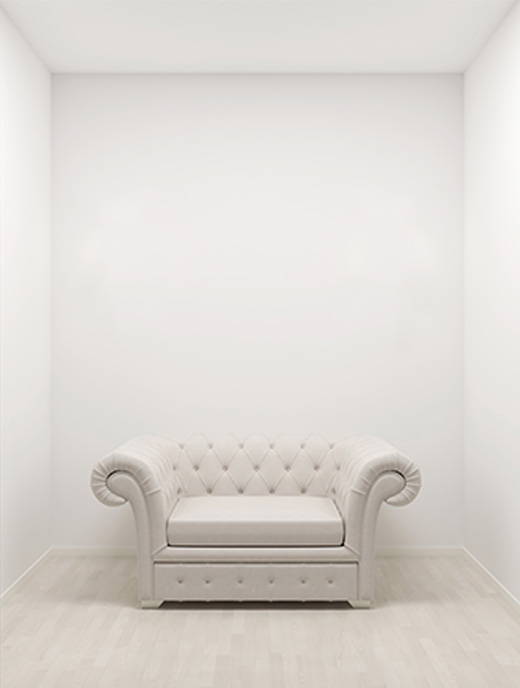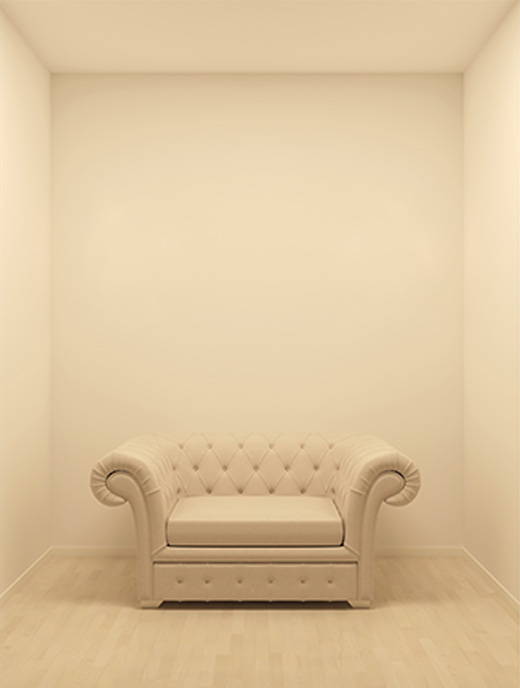When is “white light” not just white light? When selecting LED strip lights for your home or for your office. Say hello to the concept of color temperature, the industry standard for measuring color tone and appearance. To make the most of your LED strip lights, getting the color temperature right—that is, picking the most complimentary color tone for your installation—is no small matter. HitLights is your one-stop shop for getting your lights in the color temperature that will make any LED strip light installation shine bright!
Color temperature is a measurement of light in degrees Kelvin that corresponds to how we perceive the color tone of the light, for example, warm light color or clear, bright light color. A lower Kelvin degree rating on a light is generally considered warmer and softer; a higher degree Kelvin rating is more clear and more bright. For comparison, the light from a candle has a Kelvin rating of 1850; daylight at noon on a summery, cloudless day has a Kelvin rating of 6500.
When you see the color temperature ratings of LED strip lights, those will give you an indication of the relative warmth or clarity of the light and what color it will cast as it is illuminated (more on this in a moment.)
Understanding color temperature is important because it determines the look and feel of the lights and how well the color they emit will compliment or enhance the space where they are installed. Do you want soft lighting? Warm lighting? Bright, “crisp” lighting? Not sure? Confused what any of that even means? All will become clear—clear as premium 5000k white lights beaming at their brightest. (Sorry—just a little LED dad joke there.)
We’ve used this example before, but it is such a great explanation. Let’s say you’re going to paint a room white. You get to the hardware store and look for a white paint chip. Pretty quickly you’ll see all the white paint chips—all the dozens and dozens of them. Do you like Navajo white? Cool Vanilla? Bright white? Dove white? Cold cream white? All these are real paint names, by the way, and you either know from experience or know instinctively that each white paint in our example will vary slightly. If you hold the paint chips up next to each other, you will see in fact that the whites are not the same (and you can chuckle at all the creative names for white tones.)
Staying with our room painting scenario a moment more, once you’ve looked over all the paint chips, you’ll next have to reflect on what kind of white you’ll want your room to be? Is this a cozy space where you’ll want a warm white to soften the appearance of the room? Is this a modern space that needs an ultra-white gleam to the walls? Are the walls textured—crying out for a creamy white that will enhance the slight variations across the space? As you contemplate all these choices and variations, bring your thinking back to our beloved LED strip lights and our color temperature discussion. The same kinds of choices and considerations you made in our paint example carry over to our LED strip lights. The same decisions you make for the wall paint in a room translate to similar decisions you make for LED strip lights. Even if you want to simply say “just gimme some white paint” it doesn’t have to be complicated, and in fact we’re going to break down the color temperatures even more.
What are warm white LED strip lights?
What is warm light, anyway? Since we’re talking about LED strip lights, warm can’t mean heat, can it? (Sorry, second dad LED joke.) Coming in with a color temperature of 3000k, warm lights are noted for their golden glow. The cast or hue of this light has a slight yellow tinge, sometimes it’s thought of as a hint of sepia. This light is not known to be very bright, but it does create enough light output to fill a room.
In terms of feel, warm white LED lights are used to convey a sense of comfort and coziness. There’s nothing harsh or straining about this light. Warm white aims to set the mood. Picture a den or private library: warm white is right at home in these environs.
Hue or tone:Golden; glowing; hint of yellow
Mood:Cozy, comfortable, traditional
Color Temperature: 3000k
Experience the lights:Premium Luma20 in Warm White

What is better 3000K or 4000K?
We’ve heard this question before, and it really depends on what you want the lights to do. HitLights 3000k lights are warm lights; our 4000k lights are brighter and give off more of a natural white light look (think sunshine.) The difference between the two is the difference between mood lighting and light that is brighter and clearer. The 4000k natural white light might even start to show a bit of a blue light tone, common in some of the brighter LED strip lights.
When it comes to color temperature, a bigger number isn’t always better or more powerful. Focus on matching the color temperature to the other elements in the installation room.
What is cool white like in LED strip lights?
Cool white LED strip lights aim to be the brightest, clearest whites. Clocking in with a color temperature of 5000k, cool white is crisp, energetic, with a hint of blue that counterintuitively reveals as much as can be revealed in a space. Cool white is great for task lighting that needs to make everything easy to see. Blue is known to make white “pop.” That is, the blue tinge we perceive provides enough of a contrast that our eyes see the white light as “whiter.” Cool white wants to make your eyes think you are seeing the brightest light possible in a strip light. Modern spaces love cool white for LED strip lights.

Hue or tone:Slight blue tint; white light that wants to POP
Mood:Modern, energetic, bright
Color Temperature: 5000k
Experience the lights:Premium Luma20 in Cool White
When should I use soft white LED strip lights?
Many people come to LED strip lights because they want an accent light– color that adds to the atmosphere of a room, but doesn’t have to serve as a light source. But what if the accent you want is white light? (Not one of our fun or striking RGB multi-color LED strips.) Enter soft white LED strips. Soft white from HitLights has our lowest color temperature rating– our soft white is 2700k.
Soft lighting is the opposite of the “crisp” lighting described above. Gentle, diffuse (without using a diffuser!) lovely and luminous. Soft white doesn’t have the golden glow of warm white, picture more of a white aura and you’ll get soft white.
Hue or tone: White aura
Mood:Gentle, soft, luminous; best as an accent
Color Temperature:2700k
Experience the lights:Premium 24V LED Light Strip in Soft White
Are any of the white LED strip lights natural looking?
What’s one of the signatures of a beautiful home? When someone is describing a gorgeous house, one feature is sure to come up: are there a lot of windows and what is the natural light situation? If you are looking for an LED strip light to do its best to look like natural light, neutral white (4100k) is your choice.
Since natural light is such a premium, lights that come as close as possible to the color tone of the outdoors is something a lot of people want.
Neutral LED strip lights are perfect for kitchens. Neutral white doesn’t have enough blue to influence your perception of the color, but does have enough brightness to prove itself for clarity. Clear and airy are good descriptive words to go along with neutral white. Spaces that are airy, clean, open do great with neutral white.
Hue or tone: Clear with a hint of blue
Mood: Airy, open, clean, happy
Color Temperature: 4100k
Experience the lights: Premium Luma20 in Neutral White

It’s important to match or at least compliment the color temperature of the LED strip lights with the style and appearance of the room. Keep in mind: nothing cheapens a space faster than lights of mismatched color temperature. While we’ve already given you some mood notes above, keep some general tips in mind as you choose the tone of the strip lights. Darker rooms work well with warmer lights. Open concept spaces work with neutral white. Modern designs are complemented by cool whites.
Whichever lights you choose, you don’t have to figure things out alone—even which color to ultimately pick can be talked through with one of our helpful staffers. Color makes a big difference in any realm, and the color temperature of white HitLights LED strip lights is no different. (It’s important for our array of multi-color LED strip lights, too. But a color convo is for another time.)
Do you know how to get a hold of someone on our team? HitLights representatives want to talk to you. Reach out now: (1 (855) 768-4135) Now you know: it’s hard to say “just white.” HitLights wants you to get the right white.
 Ir directamente al contenido
Ir directamente al contenido

